
Multiples: Sons and Daughters
Do you ever wonder why some families have multiple sons, while others have multiple daughters? I do. Probably because I come from a family of four daughters, no sons. This week’s prompt was all the encouragement I needed to document the families in my ancestry with these sort of multiples. What I discovered is a likely genetic explanation. It looks like a lot of information, but I promise it’s easy to understand.
The Science
Many genealogists have done DNA testing and are familiar with the basics of genetics. Humans have 23 pairs of chromosomes that contain our genes. Each gene consists of two parts called alleles. We randomly receive half of each chromosome pair, and therefore half our genes and alleles, from each of our parents. One of these chromosome pairs, the 23rd, determine gender. For men, the pair is referred to as XY and for women XX. For this reason, it is men who determine the gender of their offspring. If the father contributes the Y portion of their 23rd chromosome then the child is a son. If he contributes the X portion, then the child is a daughter. [1] This is a simplification, but a full explanation is beyond the scope of this post.
The Research
A researcher at Newcastle University in The United Kingdom published a paper in 2008 [2, 3] describing his study of hundreds of years of family trees. The researcher, Corry Gellatly, determined men inherit a tendency to have more sons or more daughters from their parents. In other words, a man with only brothers is more likely to have sons and a man with only sisters is more likely to have daughters.
The research demonstrated that men carry two different types of gender determining alleles (half a gene pair) named m and f. This results in three possible combinations: mm, ff and mf. And equates to greater Y contributions (sons), greater X contributions (daughters) and a 50/50 equal number of Y and X. Note: Women carry this gene, it is not expressed but will be passed to their children. And, also, having mm or ff expressed alleles does not mean a man will only have sons or daughters, but that he is likely to have more of one, or the other. [2, 3]
Mr. Gellatly suggests his research explains why the population tends to remain nearly gender balanced over time. When there are more men, women have more opportunities to find a mate. Therefore, men with more daughters pass on more of their genes causing more daughters to be born in future generations. This would create a re-balancing of the population. He cites this effect also in reverse after major wars. Families of mostly sons had more opportunities to pass on their genes, since they were less likely to lose all their sons to the war. Again, a re-balancing of the population. [2, 3]
My Family Case Study
Let’s consider my 3rd great grandparents, John Lafary 1775-1850, and Sarah Tucker 1800-1889. [4, 5] They had 7 sons and 2 daughters all born between 1822 and 1840. Did their 7 sons inherit the genetics to have more sons than daughters?

Multiple Sons (mm)
The eldest son, Joseph Lafary 1822-1910 had 6 sons and 2 daughters. He was married to his 1st-cousin, Rebecca Tucker. [6] The 5th son, Henry Oliver Lafary 1831-1911, had 9 sons, no daughters, born between 1857 and 1879. Sadly, five of these nine boys died very young. [7]
Interesting fact, Francis and Levi were married to sisters Euphemia and Martha Lucas. The Lucas sisters had 4 brothers, and no other sisters. These two married couples, Levi/Euphemia and Francis/Martha, came from families with a heavy majority of sons. In turn, they only had daughters. As a reminder, mothers do not determine the gender of their offspring.
50/50 Sons and Daughters (mf)
That leaves three sons to account for. The 2nd son, Peter Lafary 1826-1901, had an equal number of sons and daughters at three each. [10] The 4th son, my direct ancestor, George Lafary 1830-1880, had 3 sons and 1 daughter. [11] And, the 6th son, Jacob Lafary 1838-1925, had 2 sons and 3 daughters. [12]
Another interesting item, Jacob and Henry married sisters Susan and Sarah Holmes. These ladies came from a large family of 8 daughters, no sons. The Holmes family was all daughters and the Lafary’s nearly all sons. The resulting couples were one of all sons and the other a mixed gender family. Again, mother’s do not determine the gender of their offspring. But, it would be interesting to look at the next generation for these two families.
Conclusion
Because sons Levi and Francis had ALL daughters, I had to rethink my initial theory. (That John and Sarah had passed a preference for sons to their sons.) I then recalled my 3rd great grandfather, John Lafary, had a first marriage that produced at least 3 daughters. So, despite his 2nd marriage producing mostly sons, I now believe he must have had the mf alleles. Considering the chance combination of the gender alleles from two mf parents, it seems reasonable for the Lafary sons to express the gender selection observed in their offspring.
EPILOGUE
Presumably, with the trend to smaller family sizes these gender selection traits will not be readily observable in the future.
SOURCES:
- Genetics 101, ch: Genetics Basics, section: How We Get Our Genes https://www.cdc.gov/genomics/about/basics.htm
- “Boy or girl? It’s in the father’s genes”, by Newcastle University, pub:11 December 2008 https://www.ncl.ac.uk/press/articles/archive/2015/08/boyorgirlitsinthefathersgenes.html
- Gellatly, C., “Trends in Population Sex Ratios May be Explained by Changes in the Frequencies of Polymorphic Alleles of a Sex Ratio Gene.” Evolutionary Biology 36, 190–200 (2009). https://doi.org/10.1007/s11692-008-9046-3 Accessed Online: 3 Mar 2021 at https://link.springer.com/article/10.1007/s11692-008-9046-3
- Profile of John Lafary, https://www.ancestry.com/familytree/person/tree/13493206/person/-46315989/facts
- Profile of Sarah Tucker,
https://www.ancestry.com/family-tree/person/tree/13493206/person/-46315986/facts - Profile of Joseph Lafary,
https://www.ancestry.com/family-tree/person/tree/13493206/person/814896537/facts - Profile of Henry Lafary,
https://www.ancestry.com/family-tree/person/tree/13493206/person/814896541/facts - Profile of Levi Lafary,
https://www.ancestry.com/family-tree/person/tree/13493206/person/814896540/facts - Profile of Francis Lafary,
https://www.ancestry.com/family-tree/person/tree/13493206/person/814896548/facts - Profile of Peter Lafary,
https://www.ancestry.com/family-tree/person/tree/13493206/person/814896539/facts - Profile of George Lafary,
https://www.ancestry.com/family-tree/person/tree/13493206/person/-46344994/facts - Profile of Jacob Lafary,
https://www.ancestry.com/family-tree/person/tree/13493206/person/814896546/fact



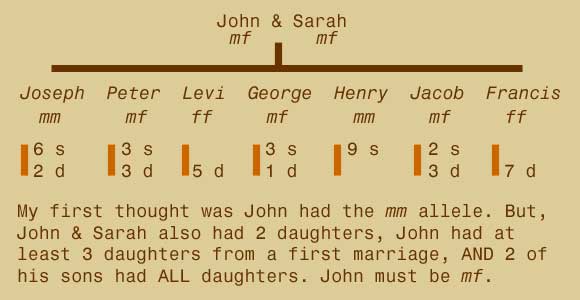

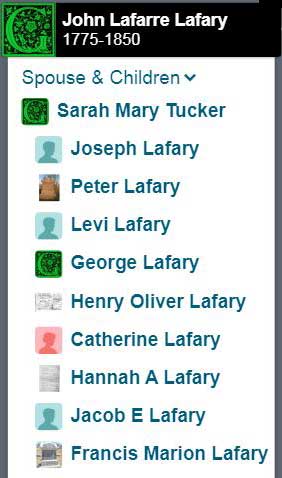
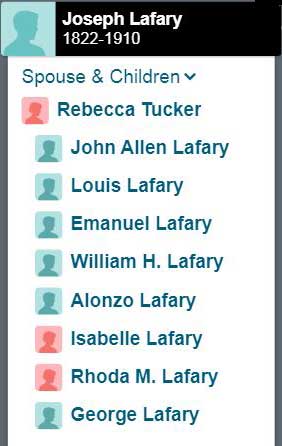
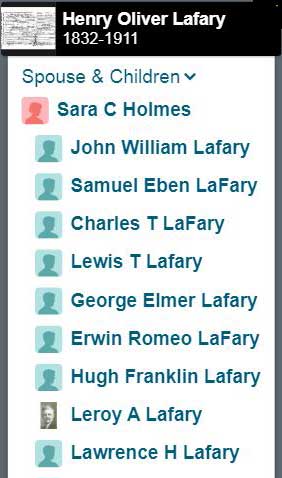
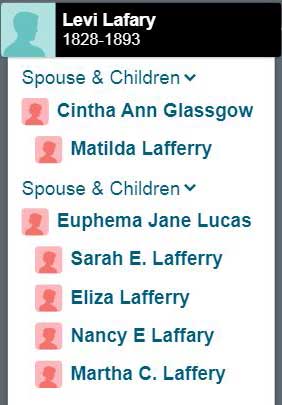
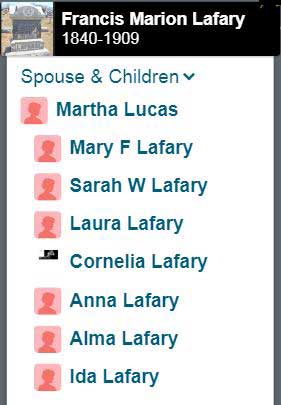
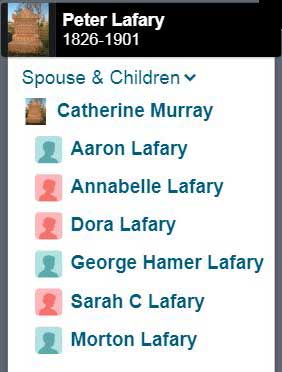
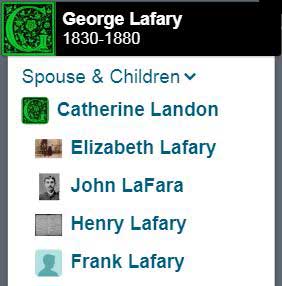

0 Comments